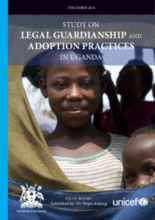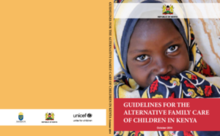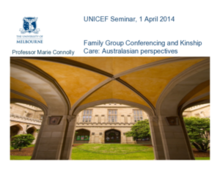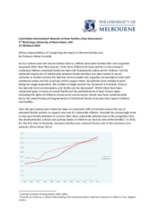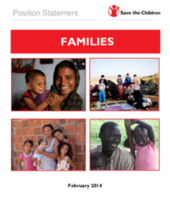Displaying 51 - 60 of 112
These Guidelines for Foster care aim to protect the well-being of children in India who are deprived of family care or who are at risk of being so.
This study on legal guardianship and adoption practices in Uganda was designed to explore and get insight into current care practices.
The initial goal of the development of these guidelines was to seek to regulate Guardianship and Foster Care of children in Kenya.
The study used pre-existing data on the most vulnerable children’s (MVC’s) and their guardians’ socio-demographic information and the services they received from Pastoral Activities and Services for People With AIDS Dar es Salaam Archdiocese (PASADA) services agency in Tanzania.
This webinar presentation by Professor Marie Connolly of the University of Melbourne introduces the history and background of Family Group Conference (FGC) in New Zealand and Australia and discusses the influence of FGC on the development of formal or statutory kinship care in the region.
In this presentation Professor Connolly reviews recent trends in the use of kinship care in Australia and discusses what this shift means in the context of the ‘residual’ model of child protection used in the country.
This position statement by Save the Children highlights the central place of families in numerous international legal instruments and how the concept has been understood. It also clarifies its own understanding of families and reviews key provisions under international law regarding their crucial role and responsibilities, and that of States towards them.
This report is based on a synthesis of eight assessments of the implementation of the Guidelines for the Alternative Care of Children (“the Guidelines”) in Benin, Gambia, Kenya, Malawi, Tanzania, Togo, Zambia and Zimbabwe.
This article closes a special edition focused on the state of child protection in 16 countries chosen to represent very different cultural contexts, historical backgrounds, and social welfare systems with special attention to out-of-home care placements, principally family foster care and residential care, though several aspects related to adoption were included as well.
This Handbook aims to provide guidance for Save the Children staff, NGO partners, Community Child Protection Groups and community volunteers in Myanmar in protecting the welfare of children living with extended family members.


